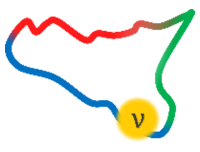Speaker
Description
The determination of the absolute neutrino mass scale remains a fundamental open question in particle physics, with profound implications for both the Standard Model and cosmology. The only model-independent method for measuring the neutrino mass relies on the kinematic analysis of beta decay or electron capture (EC) decay, assuming only momentum and energy conservation. Embedding the radioactive source inside the detector ensures that all the energy is measured except the fraction carried away by the neutrino, minimizing the systematic uncertanties. Such calorimetric approach is chosen by the HOLMES experiment.
The HOLMES experiment focuses on the electron capture decay of $^{163}$Ho, which has a low Q-value (2.863 keV) and a relatively short half-life ($T_{1/2} \sim$ 4570 years), making it ideal for high-resolution calorimetric measurements. HOLMES uses an array of ion-implanted transition-edge sensor (TES) microcalorimeters, achieving an average energy resolution of 6 eV FWHM and a time resolution of 1.5 $\mu$s. These superconducting devices operate in the transition between resistive and superconducting states at temperatures around 100 mK. Each TES is coupled to an implanted gold absorber containing $^{163}$Ho. When an interaction occurs, the resulting temperature rise is proportional to the deposited energy. The experiment utilizes a microwave SQUID Multiplexing ($\mu$ MUX) readout system, allowing multiple detectors to be monitored with minimal cabling.
Over two months, we collected $7 \times 10^7$ decay events, setting a Bayesian upper bound on the effective electron neutrino mass of $m_{\beta} < 27$ eV/c$^2$ at 90\% CI. These results validate the feasibility of $^{163}$Ho calorimetry for next-generation neutrino mass experiments and demonstrate the potential of a scalable TES-based microcalorimetric technique to push the sensitivity of direct neutrino mass measurements beyond the current state of the art. The scalability of this approach paves the way for larger arrays with higher single pixel activities thus increasing the recorded statistics and ultimately enabling sub-eV sensitivity in future experiments.

